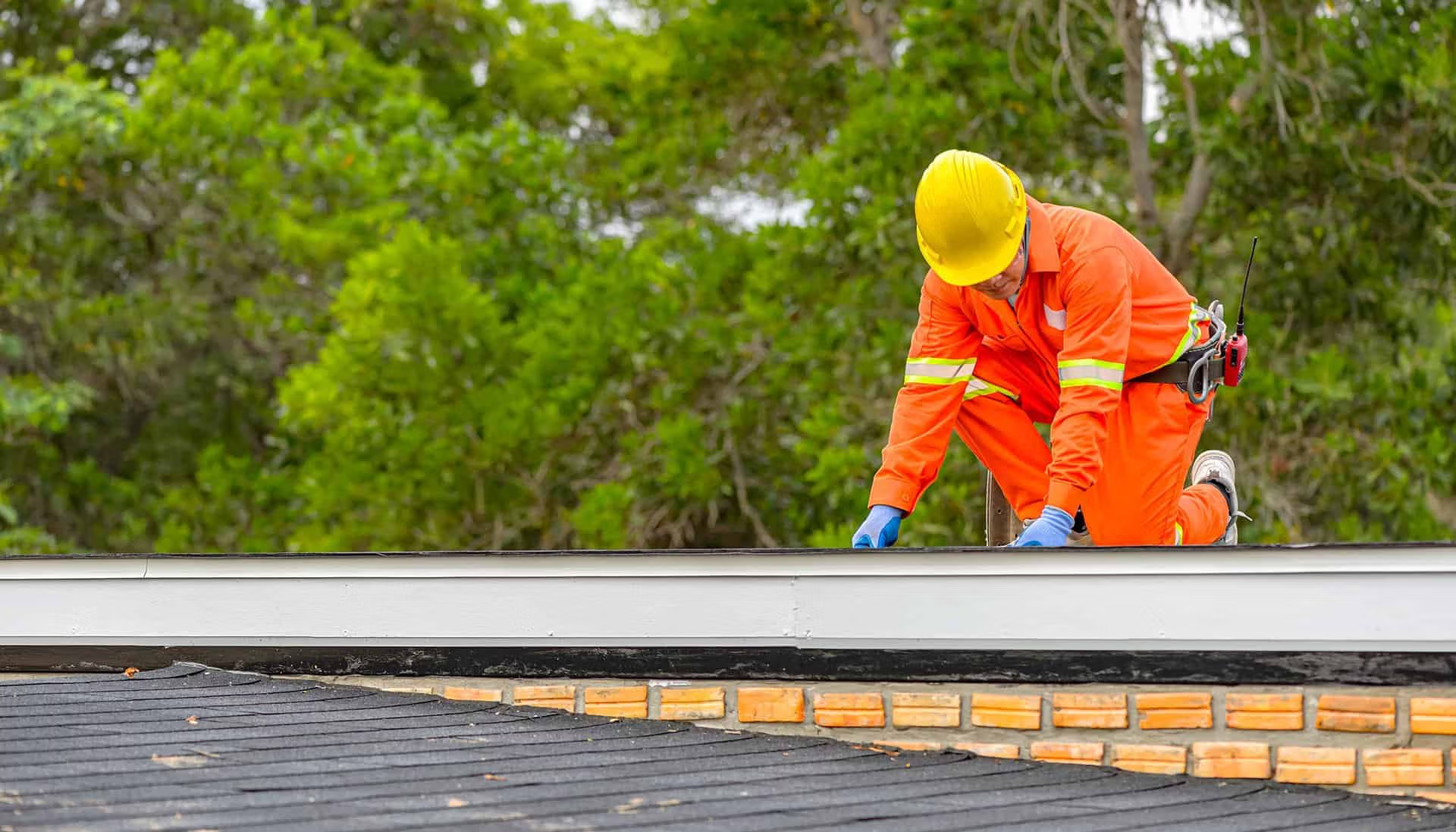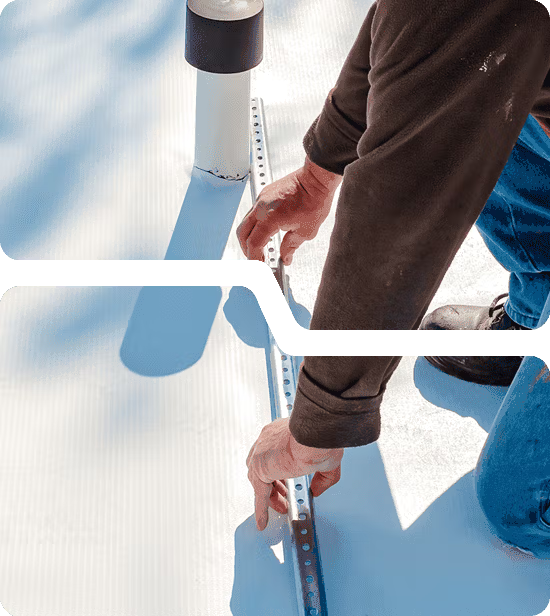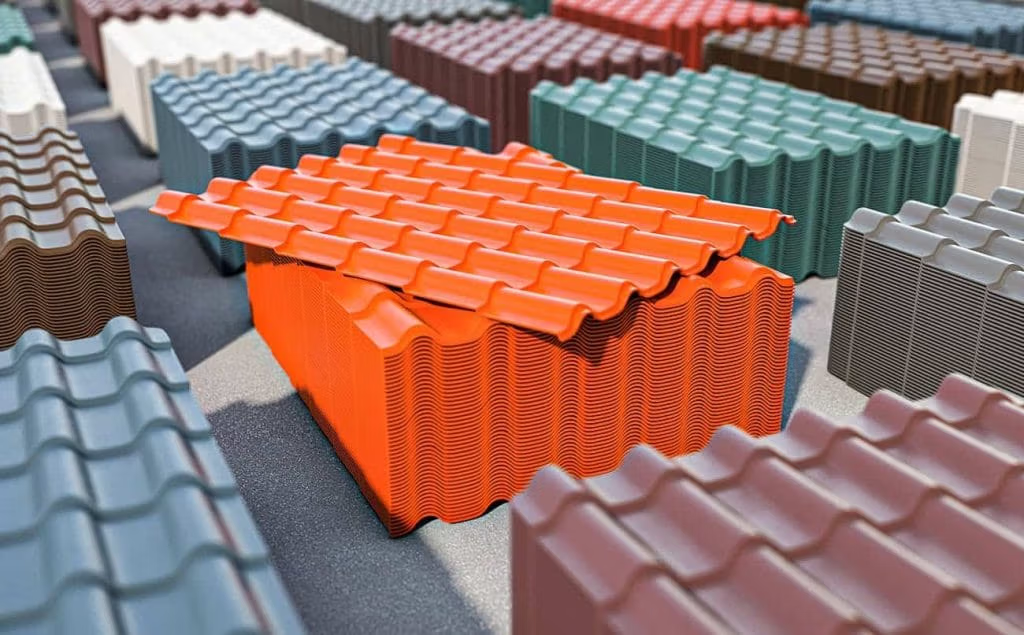As winter rolls in, cozying up by the fire with a good book, hot cocoa in hand, might be your first instinct. However, before you settle into that comfy chair, there’s something important to consider – your roof. It’s easy to forget about it while it diligently protects us from the elements all year round. But winter can be tough on our loyal coverings and ignoring their care during this season can lead to significant damage and costly repairs.
Your roof needs love just as much as your fireplace does during these frosty months. And don’t worry; we’ve got you covered! By understanding potential roofing issues, implementing preventative measures, managing snow accumulation, addressing ice dam formations, dealing with leaks and other damages promptly and ensuring proper ventilation, you’ll effectively protect both your roof and home from the harsh winter weather.
We’ll also guide you through when it’s time to call for professional help for inspection or maintenance of your rooftop buddy. So let’s get started! After all, a happy roof means a warm and safe home for you throughout winter.
Recognizing Potential Roofing Issues
As winter’s icy grip takes hold, it’s vital you’re able to spot any potential roofing issues that could turn your cozy haven into a chilly nightmare. Being proactive about inspecting your roofing materials can save you a lot of trouble down the road.
Keep an eye out for cracked or missing shingles, as they could be gateway to leaks when snow starts to melt. And don’t forget about gutter maintenance! Keeping those gutters clean ensures that melting snow can drain away from your roof properly, preventing ice dams and water damage.
Now, climbing up on the roof yourself may not be your cup of tea – we get it. But even from ground level, there are signs you can look for that indicate problems. Sagging areas or visible damage should prompt immediate action from a professional roofer.
And hey, if the thought of gutter maintenance gives you chills deeper than any winter wind could, consider hiring experts for regular check-ups during this frosty season. Remember, knowing what’s going on up above means staying warm and snug down below all winter long!
Implementing Preventative Measures

Imagine waking up to a warm and cozy home, all thanks to the preventative measures you’ve taken for your roof. You feel like a champion, don’t you? It’s because you’ve made the smart decision to prioritize gutter cleaning before winter hits in full force.
That seemingly simple task has saved you from potential water damage caused by ice dams forming in clogged gutters. Not only that, but it’s also helped prolong the life of your roofing system; keeping those shingles safe and sound so they can continue doing their job effectively.
Here’s another feather in your cap – insulation upgrades. You knew insulation wasn’t just about keeping heat in during the winter months, but also about ensuring your roof doesn’t bear an undue burden of snow or ice buildup. By enhancing attic insulation, you’ve reduced heat loss through the top of your house which can prevent ice dam formation on your roof!
The result is a safer, longer-lasting roof over your head and lower energy bills too! So go ahead; sip on that hot cocoa with extra marshmallows while enjoying the peaceful snowfall outside. You’re not just surviving this winter; thanks to these preventative measures, you’re thriving!
Managing Snow Accumulation
When the snow starts piling up, you’re ready to take action and manage that accumulation like a pro. You’ve got your sturdy shovel, your grit, and a good playlist to keep you company. But before stepping into the cold, let’s talk about snow shoveling techniques. Remember, it’s not just about strength; it’s also about strategy.
Begin by breaking down the task into sections instead of trying to clear everything at once. Shovel in layers if the snow is deep to prevent straining your back or overexerting yourself. And don’t toss that shoveled snow just anywhere! Aim for areas that won’t obstruct paths or block drainage when it melts.
Now let’s dive into de icing solutions – an unsung hero in winter roof management. Sprinkling these can make all the difference between a slick, dangerous surface and a safely navigable one. Rock salt is an affordable option but be mindful as it can damage certain roofing materials and plants below if used excessively.
Alternatively, consider calcium chloride-based products which are less corrosive and work even in very low temperatures. Always remember though: safety first! Make sure you’re wearing slip-resistant shoes while applying these solutions on your roof or pathways around your home so you stay upright while keeping that winter wonderland under control.
Addressing Ice Dam Formation
Let’s tackle the issue of ice dam formation, a pesky problem that can cause significant damage if left unchecked. Ice dams might seem like an inevitable part of winter roofing, but you can take steps to minimize their impact. Your first line of defense is gutter maintenance.
Keeping your gutters clean and clear means water can flow freely away from your roof instead of freezing and forming damaging ice dams. But remember, it’s not just about clearing out leaves and debris; you also need to inspect them for any damages or leaks that could exacerbate the ice dam situation.
Now let’s dive into insulation solutions, another crucial aspect in preventing ice dams on your winter roof. When your attic is properly insulated, it keeps heat from escaping through the roof and melting snow on top. The melted snow then refreezes at the colder edges of your roof, leading to those dreaded ice dams.
So consider having an energy audit done to identify areas where insulation could be improved in your home. It may feel like a hefty task now but trust me, it will save you a lot more trouble down the line!
Handling Leaks and Other Damage

Addressing roof leaks and other damages promptly is crucial to maintaining the integrity of your dwelling, as these seemingly minor issues can quickly escalate into major concerns if neglected. Winter brings its own set of challenges for homeowners, including ice dams that we’ve previously discussed, but there’s also the threat of leaks and other damage caused by heavy snowfall or melting ice.
It’s essential to master a few leak detection techniques so you can spot trouble long before it becomes a full-blown issue. Don’t worry – you don’t need to be an expert roofer! Just keep an eye out for signs like damp spots on your ceiling or walls, unusual stains, mold growth or even changes in energy consumption which might indicate heat loss through damaged areas.
It’s no secret that winter weather won’t wait around while you figure out what to do next – this is where emergency repair methods come into play. If you discover a leak during a storm, immediate action will help prevent further damage until professional help arrives. A handy tip? Use a roof patch kit available at most home improvement stores – they’re easy to use and effective at providing temporary relief from leaks.
For more extensive damage though, it may be necessary to install tarpaulins or seek professional assistance sooner rather than later. Remember, acting swiftly and smartly when problems arise will save your property from escalating damages and spare your wallet unnecessary expenses down the line!
Ensuring Proper Ventilation
You might not realize it, but ensuring proper ventilation in your attic plays a critical role in maintaining the overall health of your house. Now you may be wondering, how does this tie into winter roofing? Well, proper ventilation prevents moisture buildup that can lead to damaging ice dams on your roof. It’s like giving your home the ability to breathe during those frigid winter months.
The benefits of good ventilation are numerous – increased energy efficiency, prevention of mold growth and improved indoor air quality just to name a few. So next time you’re up there hanging holiday lights or clearing snow off the shingles, take a moment to check if everything is well-ventilated.
Now let’s talk upgrades! Yes, even something as seemingly simple as ventilation can benefit from an upgrade. A more efficient system will ensure warm air circulates and exits properly, preventing condensation and potential damage to your insulation and roof structure over time.
Think about it this way – by investing in bettering your home’s breathability now with some strategic ventilation system upgrades, you’re saving yourself from headaches down the road when Old Man Winter throws his worst at you. Trust us – it’s one investment that’ll certainly pay dividends in terms of peace of mind (and a healthier home)!
Employing Professional Roof Inspection and Maintenance
Investing in a professional roof inspection and maintenance may seem like a chore, but it’s one of those proactive steps that can truly save you from serious headaches down the line. You see, winter is notorious for being hard on roofs, with its freezing temperatures and heavy snowfalls. The last thing you’d want is to get caught off guard by a sudden leak or structural damage when the cold season hits.
That’s where professionals come into play. They know exactly what to look for and how to address any issues they find before they become major problems. Plus, their expertise in roofing materials selection ensures your roof is equipped with the best defense against harsh weather conditions.
When choosing a contractor for this job though, don’t just go with the first name that pops up on your search engine – take time to sift through your options carefully. Contractor hiring tips often recommend checking out online reviews, asking about warranties offered, confirming insurance coverages and licensing credentials, even requesting references from past clients if possible.
It’s crucial you feel comfortable and confident in your chosen professional because after all, they’ll be working on one of the most important parts of your home – your roof! So go ahead, make that investment in professional inspection and maintenance today. It’s an act of love for your home that will pay dividends in comfort and peace of mind through many winters to come.














